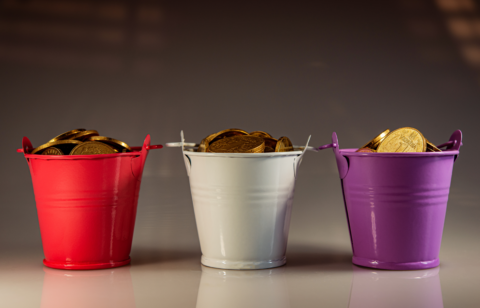Creating a budget may seem challenging, but it’s definitely worth it. The envelope budget system is a great way to manage your disposable income. How does it work? It’s simple: You divide up any extra money you have into separate paper envelopes and write a category of spending—like gas, restaurants and groceries—on each one. When you’ve spent the cash in one envelope, you know you’ve reached your budget for that category. Keeping track of how much money you have left in each category is a great way to keep you from spending too much.
How to Get Started with Envelope Budgeting
Figure Out Your Total Monthly Income
Before you can know how much money you have available to spend, it’s important to find out the total amount of money you’re making each month. Make sure to add up the money you make in a month from your regular paycheck and any other sources of income you may have, like part-time or freelance work, child support or spousal support.
Track Your Monthly Expenses
Take a look at your recent bank statements and write down how much money you’re currently spending each month in categories like housing costs, utilities, insurance, savings, and investments; and on things like food, entertainment and clothing. Being as detailed as possible will help you paint a better picture of where your money is going—small purchases like snacks and coffee can add up quickly.
Choose Your Spending Categories
Start small with only a few categories like food, entertainment, gas and shopping, and then add new categories as you become more comfortable with the envelope budget system.
Fill Your Envelopes
Once you’ve decided on your spending categories, it’s time to get started filling your envelopes. Label each envelope with the name of a spending category like “Food” or “Gas”.
Fill and Spend from Your Envelopes
When you receive your paycheck, put the amount of cash you’ve budgeted for each category in its own envelope. For example, if you have budgeted $100 per month on gas, put $100 cash into the envelope labeled “Gas”.
Evaluate Your Progress
When you need to buy something, feel free to use the cash from the corresponding envelope, but once you run out you’re not supposed to spend any more money from that category.
Adjust your budget as needed. At the end of the month, see how much money is left in each envelope. If you have some left over, put it into a savings account or invest it, then decrease the amount of money you’re budgeting for that category next month.
What To Do if an Envelope Runs Out of Money
Don’t worry if you run out of money in one or two envelopes before the month is over. Just try to find ways to cut back on spending in that category. For example, if you run out of money in your food envelope, you might try staying in for dinner instead of going out or ordering in.
It’s also important to be patient with yourself—it takes time to stick to a budget. If you go over budget a few times, don’t give up.
If the envelope budget system isn’t for you, there are a variety of different ways to track your spending, like apps and spreadsheets—you can even use a notebook! However you decide to budget your money, the most important thing to do is find a system that works for you and stick with it.







